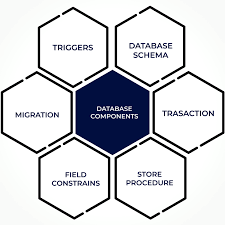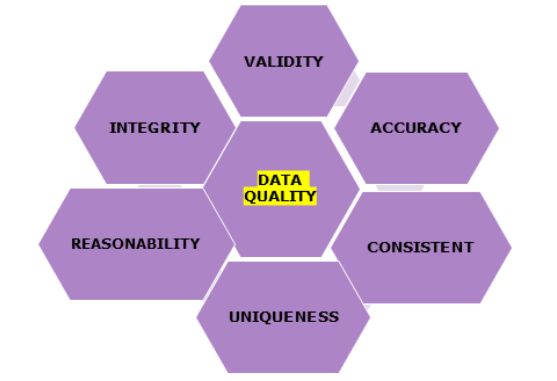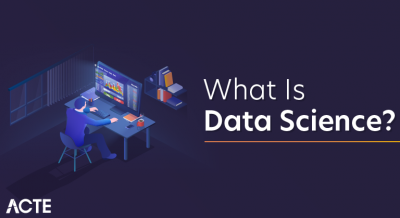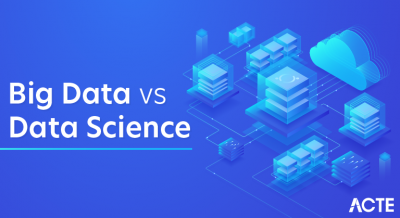
- Introduction to Data Management
- Importance of Data Management in Organizations
- Key Components of Data Management
- Data Storage and Retrieval Techniques
- Data Security and Privacy
- Data Integration and ETL Processes
- Data Governance and Compliance
- Data Quality and Consistency
- Tools and Technologies for Data Management
- Challenges in Data Management
- Future Trends in Data Management
- Conclusion
Introduction to Data Management
Data management encompasses the processes of collecting, storing, organizing, maintaining, and utilizing data in a way that is both efficient and secure. In today’s data-driven world, it is a critical aspect of modern organizations, as data plays an essential role in decision-making, strategic planning, and operational efficiency. With businesses relying more heavily on Data Science Course Training to drive insights, improve customer experiences, and optimize operations, effective data management is key to ensuring the accuracy, accessibility, and security of this valuable asset. A well-established data management system ensures that data is organized in a structured way, making it easier for teams to access and use when needed. It also safeguards against data loss, corruption, or unauthorized access, ensuring compliance with relevant regulations such as GDPR, HIPAA, or industry-specific standards. Moreover, effective data management enables organizations to streamline operations, reduce redundancies, and avoid errors that can arise from poor data handling. By maintaining high-quality data, businesses can make more informed decisions, optimize processes, and stay competitive in their industries. As data continues to grow in volume and complexity, the importance of efficient and secure data management practices will only increase, making it a foundational element for success in the modern business landscape.
Importance of Data Management in Organizations
Organizations rely heavily on structured and unstructured data for business operations in today’s data-driven world. Proper data management offers several key benefits:
- Improved Decision-Making: Reliable and well-structured data provides valuable insights that support strategic and operational decisions.
- Regulatory Compliance: Organizations must comply with legal and industry-specific regulations such as GDPR, HIPAA, and CCPA.
- Enhanced Security: Protecting sensitive data from cyber threats and unauthorized access is crucial.
- Cost Efficiency: Efficient Data Analyst Job Description and retrieval reduce operational costs and minimize errors.
- Business Continuity: Proper data backup and disaster recovery strategies ensure the availability of critical data in case of system failures or cyberattacks.
- Better Customer Experience: Well-managed data enhances customer interactions and personalization efforts.
- Competitive Advantage: Organizations leveraging data effectively can outpace competitors by identifying trends and optimizing operations.
- Operational Efficiency: Streamlined data management processes reduce redundancy and improve productivity.
Unlock your potential in Data Science with this Data Science Online Course .
Key Components of Data Management
Effective data management consists of several core components:
- Data Collection: Gathering data from multiple sources, such as applications, databases, IoT devices, and social media.
- Data Storage: Utilizing databases, data lakes, and cloud storage solutions to store data securely.
- Data Processing: Cleaning, transforming, and Data Mining vs Machine Learning to make it usable for analysis.
- Data Security: Implementing encryption, access controls, and authentication measures to protect data.
- Data Integration: Merging data from different sources to provide a unified view.
- Data Governance: Establishing policies, procedures, and data use and security standards.
- Data Quality Management: Ensuring data accuracy, completeness, and consistency.
- Data Analytics: Using statistical and AI-driven tools to derive insights from data.
- Metadata Management: Maintaining information about data attributes, definitions, and lineage.
- Master Data Management (MDM): Ensuring consistency across multiple data systems.

Data Storage and Retrieval Techniques
Organizations utilize a range of data storage and retrieval techniques to manage and access information effectively, depending on the nature and volume of their data. Databases, both relational (SQL) and non-relational (NoSQL), are commonly used to store structured and semi-structured data, supporting everyday operations and transactions. Data warehouses serve as centralized repositories for SQL Intersec of structured data, optimized for analytics and reporting. In contrast, data lakes are designed to store raw, unstructured data at scale, accommodating a wide variety of formats from different sources. Cloud storage solutions like AWS S3, Google Cloud Storage, and Microsoft Azure offer scalable, cost-effective, and secure storage options, enabling easy access and integration across platforms. Blockchain technology is also emerging as a decentralized storage solution, providing secure, tamper-proof transaction records, especially in finance and supply chain management. Efficient data retrieval is facilitated through techniques like indexing, querying, and caching, which ensure quick access to information. Furthermore, advanced search algorithms and machine learning are increasingly being integrated to enhance retrieval speed and accuracy, particularly in large and complex datasets.
Learn how to manage and deploy cloud services by joining this Data Science Online Course today.
Data Security and Privacy
Data security and privacy are crucial for protecting sensitive information. Organizations implement various strategies, including:
- Encryption: Protecting data using algorithms like AES and RSA.
- Access Controls: Role-based access and multi-factor authentication (MFA).
- Data Masking: Hiding sensitive information while allowing usability.
- Regular Audits: Monitoring access logs and Round off Formula in Excel .
- Compliance Adherence: Following regulations like GDPR and HIPAA.
- Data Loss Prevention (DLP): Implementing policies to prevent data breaches.
- Zero Trust Security: Verifying every access request ensures that only authorized users can view sensitive data.
Data Integration and ETL Processes
Data integration is essential for creating a seamless flow of information across systems. Modern ETL Processes include Talend, Apache Nifi, Informatica, and Microsoft SSIS. Additionally, ELT (Extract, Load, Transform) has emerged as an alternative approach that loads raw data into storage before applying transformations. The ETL (Extract, Transform, Load) process plays a significant role in data integration:
- Extract: Retrieving data from multiple sources.
- Transform: Cleaning, structuring, and validating data.
- Load: Storing processed data into target systems (data warehouse, database, etc.)
Data Governance and Compliance
Data governance is a critical component of effective data management, involving the establishment of policies, standards, and frameworks to ensure data quality, security, and compliance. One of its core aspects is data ownership, which assigns responsibility for specific data assets to individuals or teams, ensuring accountability. Data stewardship supports this by enforcing data policies and maintaining the integrity and consistency of data across the organization. A Data Extraction Tools focus of governance is regulatory compliance, which involves adhering to data protection laws such as GDPR, HIPAA, and CCPA to protect personal and sensitive information. Metadata management plays an essential role by documenting data definitions, tracking data lineage, and clarifying usage, which supports transparency and understanding. Risk management within data governance involves identifying, assessing, and mitigating risks associated with data handling and exposure. Additionally, maintaining audit trails, logs of data access and modifications helps organizations monitor activity, detect anomalies, and ensure accountability, especially in regulated industries. Together, these elements create a robust foundation for ethical, secure, and efficient data use.
Data Quality and Consistency
Poor data quality leads to inaccurate insights and business inefficiencies. Organizations ensure data quality through:
- Data Validation: Verifying data accuracy at the Data Science Course Training of entry.
- Data Cleaning: Removing duplicates and correcting errors.
- Data Standardization: Ensuring uniform formats and naming conventions.
- Data Profiling: Analyzing data patterns and inconsistencies.
- Continuous Monitoring: Using automated tools for real-time quality checks.
- AI-Powered Data Cleaning: Leveraging machine learning algorithms to detect and correct anomalies.

Tools and Technologies for Data Management
Numerous tools support data management across different domains:
- Databases: MySQL, PostgreSQL, MongoDB, Oracle DB
- ETL Tools: Talend, Excel Sheet Protection , Informatica PowerCenter
- Cloud Storage: AWS S3, Google Cloud Storage, Microsoft Azure
- Data Governance: Collibra, Alation, IBM Data Governance
- Security Tools: IBM Guardium, McAfee DLP, AWS IAM
- Analytics Platforms: Power BI, Tableau, Google Looker
- Data Lineage Tools: Apache Atlas, Informatica EDC
Looking to master Data Science? Sign up for ACTE’s Data Science Master Program Training Course and begin your journey today!
Challenges in Data Management
Despite its advantages, data management comes with challenges:
- Data Silos: Fragmented data across multiple Data vs Information .
- Security Threats: Cyberattacks and unauthorized access.
- Data Quality Issues: Inconsistent, incomplete, and duplicate data.
- Scalability Challenges: Handling large volumes of data efficiently.
- Compliance Complexity: Adhering to evolving regulations.
- Cost Management: Balancing storage and processing costs.
- Integration Issues: Combining data from disparate sources.
- Data Overload: Managing large-scale big data while ensuring relevance and usability.
Future Trends in Data Management
Data management is constantly evolving, and emerging trends include:
- AI-Driven Data Management: Automating data cleaning and Coding Required for Data Science with AI.
- Edge Computing: Processing data closer to the source for real-time insights.
- Blockchain for Data Security: Enhancing data integrity and traceability.
- Cloud-Native Data Management: Moving from on-premises to cloud solutions.
- Data Fabric Architecture: Providing seamless data access across platforms.
- Self-Service BI: Enabling users to analyze data without IT intervention.
- Privacy-Enhancing Technologies (PETs): Strengthening data protection measures.
- DataOps: Applying DevOps principles to data management for improved agility.
Boost your chances in Data Science interviews by checking out our blog on Data Science Interview Questions and Answers!
Conclusion
Data management is a crucial discipline that enables organizations to make the most of their data while ensuring its security, compliance, and efficiency. With the exponential growth of data, businesses must adopt best practices, cutting-edge technologies, and strong governance frameworks to ensure their data remains high-quality and secure. Effective data management involves organizing and storing data and making it easily accessible for decision-making while protecting Data Science Course Training from unauthorized access or misuse. To stay competitive, companies must stay ahead of evolving trends, such as data privacy regulations, artificial intelligence, and machine learning integration, while addressing challenges like data silos and scalability. By continuously changing their data strategies, businesses can unlock the full potential of their data, drive innovation, and ensure long-term success. In a data-driven world, mastering data management is key to achieving operational efficiency and maintaining a competitive edge.





